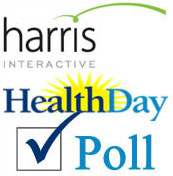
THURSDAY, June 17 (HealthDay News) — Despite years of hype around the issue, less than one in 10 American adults now utilize electronic medical records or turn to e-mail to contact their doctor, a new Harris Interactive/HealthDay poll finds.
Nearly half of respondents weren’t even sure if their physician offered these technologies, according to the survey.
Still, most of those polled said they would like their doctors to access their medical records with the click of a mouse. On the other hand, only about a third (30 percent) believe their insurer should have that same access.
Overall, “the general public only has a vague idea, only a very limited understanding, of what all this is about,” reasoned Humphrey Taylor, chairman of The Harris Poll, a service of Harris Interactive.
The poll was conduced online from June 8-10 among 2,035 U.S. adults.
Despite the Obama administration’s campaign to expand the use of health information technology, public attitudes toward electronic medical records haven’t budged much over the past few years, the poll shows.
This year, as in 2009, 78 percent of adults indicated that they “strongly” or “somewhat” agree that doctors should have access to their electronic medical records. In 2007, 80 percent were in agreement on physicians’ access to those records.
But patients’ use of various electronic functions remains very low. Only 9 percent can communicate with their doctors by e-mail, up from 4 percent in 2006. Eight percent can schedule a doctor’s visit online, up from 3 percent, and 8 percent can get diagnostic test results by e-mail, up from 2 percent in 2006.
A little more than a quarter (28 percent) of those polled thought their doctor used electronic medical records, but 42 percent said they didn’t know if their primary care physician had the technology.
Experts believe many consumers remain skeptical about the inappropriate use of health information stored and accessed electronically.
“Ideally, the government only allows ‘covered entities’ access to your entire health history, called your ‘personal health information’,” said Erin Stevenson, a digital health-care consultant at Redwood Medical Consulting in Bayside, Calif. But the law is vague and full of loopholes, he explained.
Yet Stevenson doesn’t think consumer skepticism will impede wider use of the technology. In the end, he said, the technology “makes moving around a city, state, or changing doctors much easier,” and it allows doctors to make quicker and better informed decisions.
But, as of now, Americans don’t seem to appreciate the benefits of having their intimate health details stored in a computer vs. stowed away in file folders scattered across multiple doctors’ offices, Taylor said.
“The policy wonks talk very persuasively about all of the improvements in quality that come from having a complete electronic medical record,” he observed, but “that case has not really been made effectively to the public.”
The survey also revealed regional differences, with more people in the West (35 percent) saying their primary-care doctor uses an electronic medical record than in other regions.
But with less than a tenth of American adults using electronic medical records, “the numbers are still very small,” said Taylor, suggesting that the electronic “revolution” in health care is still in its infancy. But the numbers in some cases have doubled, and he expects that trend to accelerate over time.
In an editorial published last year in the New England Journal of Medicine, Dr. David Blumenthal, now the Obama administration’s National Coordinator for Health Information Technology, noted that few providers have even basic electronic health records. Adoption of the technology has been slow, he explained, because of the cost of converting to an electronic records system, perceived lack of financial return, implementation issues, provider inertia and privacy and security concerns.
President Barack Obama authorized $19 billion in stimulus funding over several years to speed doctors’ and hospitals’ move toward electronic records. However, the financial incentives are tied to new rules that many providers consider overly burdensome.
Over time, experts believe electronic medical records will make inroads in American medicine.
“There’s no question; it’s the future,” Taylor said. “The question is ‘How quickly do we get there?'”
More information
Read more about the poll methodology and findings at Harris Interactive.

